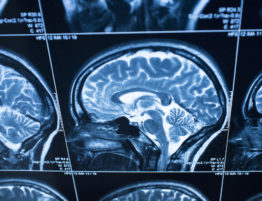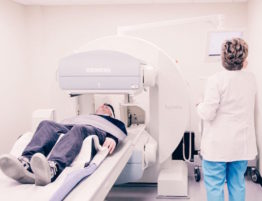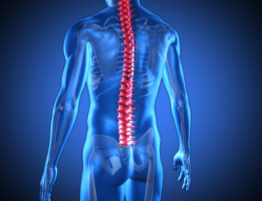What follows is a brief discussion of some of the more common, devastating, injuries that necessitate the expertise of an attorney, knowledgeable in catastrophic injury claims, to obtain adequate financial compensation for the injured individual.
If you or your loved one has suffered catastrophic injuries as the result of an accident, contact our experienced personal injury trial lawyers for a free consultation and learn about your rights to compensation.
Severe Burn Injuries
Burns are some of the most expensive injuries to treat. For example, a burn that covers 30% of the body can cost approximately $200,000 to treat. Additional fees are incurred for later surgical reconstruction and treatment. Recent statistics show that at least 50% of all burn accidents could have been prevented. This means that most burns are caused by the fault of something or someone, often not the victim. On average, 2.4 million burn injuries are reported every year. 75,000 of those injuries are of such a severe nature as to require hospitalization. Of the victims hospitalized, approximately 20,000 have first-degree burns covering 25% of their total body surface. Approximately 12,000 burn victims die, and one million are temporarily disabled.
A major complication of severe burns is that they impair other vital systems of the body; this in turn makes victims susceptible to complications, including organ failure, limited use of limbs and severe restriction of the musculature system. Reconstructive surgery can also result in serious complications.
Many complications do not manifest themselves for years after the original injury, making it much harder for victims to accept and, for attorneys, to recover appropriate compensation for them. Therefore, one must be careful to retain an attorney who has extensive experience representing burn victims, since such an attorney will be familiar with the long-term complications of burn injuries, and will ensure that an injured person receives the compensation he or she needs, both for the present and the future.
Brain Injuries
Every year in America, nearly 100,000 people suffer brain injuries that permanently affect their ability to work and do the simple tasks necessary for daily living. Surprisingly, one does not have to be traveling at a high rate of speed or have one’s head strike an object, such as a steering wheel or windshield, to suffer a traumatic brain injury. Mild brain injuries can be caused by falls, car accidents or sport-related activities. Trauma to the head or neck region can cause the brain to bruise, bleed, tear, and/or swell. There are two general types of head injuries, open or closed. An open injury means the skull has been fractured, while a closed head injury does not involve a fracture. Both types of brain injury can cause paralysis, loss of vital body functions and death.
In the event of a head-on car collision, involving two cars traveling at 45 miles per hour, the “soft” tissue of the brain is forced against the hard bone of the skull. The human skull has ridges, which normally do not come into contact with the brain. The force of an accident can cause blood vessels to tear, releasing blood into areas of the brain or skull that are not able to accommodate such blood. This causes an increase in pressure that causes the brain to press against the skull, causing impaired brain function or the death of brain cells. If enough blood leaks into the brain cavity, areas of the brain that control breathing or cardiac function, a minor injury could become fatal within a very short period of time. Remarkably, it is possible to suffer from such an injury and feel fine. Some victims have suffered such an injury in an automobile accident, yet been able to get out of their car and direct traffic away from the scene! Therefore, if there is any question at all whether a brain injury could have occurred, it is critical to go to the nearest hospital.
Bruising of the brain is also a common injury in automobile accidents, falls, and sport-related accidents. The impact in such occurrences can force the brain forward and then backward, or vice versa. The force can cause bruising in some areas and bleeding in others.
Another common effect of trauma to the brain is called tearing. The force of a collision can cause tearing. Tearing is similar to what happens if a block of ice were to be struck with a hammer; small cracks form, yet the block remains intact. The nerve system of the brain is usually damaged and, depending on the areas in which this occurs, can cause serious impairment of bodily functions. Significantly, this injury may not manifest itself immediately.
When the brain suffers the type of trauma described above, swelling usually occurs. The body’s natural healing processes cause swelling. The problem with swelling of the brain is that there is no room for the brain to migrate. What results is called intra-cranial pressure, which can be deadly or cause severe impairment of body functions.
One can sustain the force necessary to suffer a brain injury in several types of accidents, including car accidents, sport-related occurrences, and work related accidents. Because there may be a gap in time between a traumatic physical event and a victim experiencing physical symptoms resulting from that trauma, the importance of hiring an attorney experienced in brain injury cases, who can tie the injury to its original cause, cannot be overemphasized.
Spinal Cord Injuries
A spinal cord injury can be one of the most devastating events in life, both for the individual experiencing it and his/her family and friends. Spinal cord injuries impose a tremendous burden on both the affected individuals and society at large, with costs that are staggering. The quality of life for individuals with spinal cord injuries has greatly improved in the last 60 years. This has been especially true in the last two decades. Statistical data published by the National Spinal Cord Injury Statistical Center reflects continuing improvements in life expectancy and a reduction in the severity and occurrence rates of life threatening spinal cord injury complications. Improvements in standards of care, adaptive equipment, environmental modification, and legislation benefiting the disabled, have enhanced and enriched the lives of many injured individuals and their families.
The type of activity giving rise to spinal cord injuries varies by age, with sport-related spinal cord injuries more common in children and teenagers, while work-related spinal cord injuries (especially from construction work) predominate in adults. According to data from the National Spinal Cord Injury Association (NSCIA), the most common causes of traumatic injury to the spinal cord are:
- Motor vehicle accidents (44%)
- Acts of deliberate violence (24%)
- Falls (22%)
- Sports (8%; two thirds of which are from diving)
- All other causes (2%)
When someone suffers a severe spinal cord injury resulting in paralysis or serious impairment of other body functions, it is very difficult to accept the notion that there is no cure. One of the primary reasons there is no “cure” is because central nerves, damaged in such injuries, do not grow back or regenerate.
Another reason spinal cord injuries are so often irreversible is because the spinal cord is one of the most complex parts of the human body. The spinal cord makes up the majority of the body’s most specialized system, the central nervous system. The central nervous system consists mainly of the brain and the spinal cord. The spinal cord carries messages to and from all parts of the body and the brain. Therefore, any impairment of its ability to function will have a profound effect on the body. A spinal cord injury can lead to any of the following:
- problems with the respiratory system;
- cardiovascular complications;
- urinary tract complications;
- gastrointestinal complications;
- metabolic changes;
- neurological disorders;
- sexual dysfunction; and
- psychosocial and vocational issues.
Unfortunately, the problem posed by how our central nervous system responds to an injury is complex. Many breakthroughs occur each year, yet they are merely building blocks to a cure for problems created by a spinal cord injury.
The aftermath of spinal cord injury often results is restrictions of role fulfillment as a worker, student, parent, spouse, citizen, or other status. Sometimes these disadvantages are not due so much to the disability as to societal reactions to disability. The person with a spinal cord injury has to cope not just with a changed body image, new ways of doing things, and increased reliance on others for daily activities, but also with changes in his or her social roles and interactions.
Due to the severe and permanent nature of a spinal cord injury, in bringing a claim for such an injury based on the fault or wrongdoing of another, it is imperative to retain the services of an accomplished attorney and competent physician. While these professionals may not be able to alleviate an individual’s pain or loss of body functioning, they can obtain the optimal financial recovery to which an injured individual may be entitled, and access to the most current medical advances. An attorney experienced in handling catastrophic injury cases will know how to uncover all of the parties who may be responsible for your injuries.





